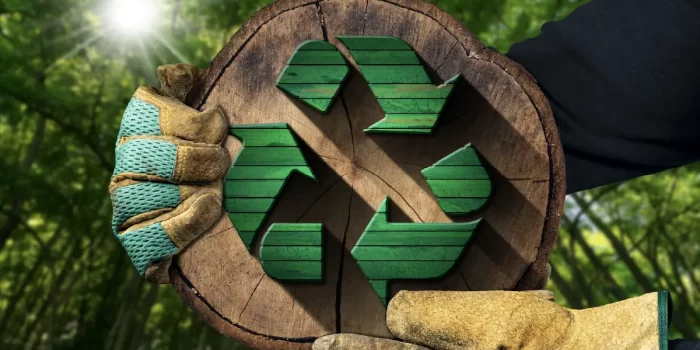Introduction
The Sustainable Timber Industry is not just a necessity but a responsibility for global economies and environmental sustainability. The demand for timber in construction, furniture, and paper production continues to rise, yet unsustainable logging remains a leading cause of deforestation, biodiversity loss, and climate change. We must advocate for a sustainable approach that ensures economic benefits while preserving our planet. Sustainable forestry practices present a clear path forward, providing solutions to mitigate environmental damage and protect our forests for future generations. [1]
You're viewing a members-only article.
To keep reading, please log in or join the One Health Society.
Stay connected to exclusive insights, expert commentary, and opportunities to collaborate across the fields of human, animal, and environmental health.
Already a member? Log In
New here? Join the One Health Society - become One
Economic Significance of the Timber Industry
Global Market Overview
The timber industry serves as a backbone for numerous economies worldwide, influencing trade, employment, and rural development. Sustainable forestry practices can ensure that economic prosperity does not come at the cost of environmental degradation.
- Production Volume: Global timber production reached 4.1 billion cubic meters in 2020, with half used as fuelwood. [2]
- Trade Value: The global trade in timber and wood products generated $240 billion in revenue in 2020, underlining its economic importance. [2]
- Key Producers: Major timber-producing countries include Brazil, Canada, Russia, the U.S., and China, yet many of these nations struggle with balancing industrial demand and forest conservation. [2]
- Employment: The industry provides jobs to approximately 13 million people worldwide, with many working in regions highly dependent on forest-based economies. [2]
Without strong policies promoting sustainable forestry, these economic benefits come at the expense of environmental degradation. Governments and industry leaders must take decisive action to regulate logging and incentivize sustainable practices that ensure long-term prosperity.
Environmental Impact of the Timber Industry
1. Deforestation and Habitat Loss
- Unsustainable logging is one of the biggest drivers of deforestation, destroying critical ecosystems and endangering countless species. The Amazon rainforest, for example, continues to suffer from excessive deforestation due to illegal logging and inadequate enforcement of conservation laws. [3]
- Example: The Amazon rainforest has lost millions of hectares due to logging for valuable hardwoods, with severe consequences for species like jaguars, sloths, and harpy eagles. [4]
2. Biodiversity Decline
- The destruction of forests disrupts entire ecosystems, threatening the survival of wildlife dependent on these habitats.
- Example: In Borneo, unchecked logging has pushed orangutans and Sumatran tigers to the brink of extinction. The expansion of palm oil plantations further exacerbates this crisis, making the regulation of timber harvesting more essential than ever. [4]
3. Carbon Emissions and Climate Change
- Forests function as carbon sinks, absorbing CO2 from the atmosphere. When trees are logged, stored carbon is released, accelerating climate change.
- Deforestation contributes to 10-15% of global anthropogenic carbon emissions, making sustainable timber management a key component of climate action. [4]
- Example: The Congo Basin’s deforestation significantly impacts global CO2 emissions, showing how unsustainable forestry exacerbates the climate crisis. [4]
4. Soil Degradation and Water Disruption
- Logging increases soil erosion, affecting soil fertility and leading to water cycle disruptions that impact agriculture and local communities.
- Example: The Pacific Northwest’s extensive logging has led to soil degradation, impacting salmon populations that depend on pristine freshwater systems for survival. [2]
Urgent Need for Sustainable Practices in the Timber Industry
1. Forest Stewardship Council (FSC) Certification
- FSC certification ensures wood products originate from responsibly managed forests, reducing illegal logging and encouraging sustainable forestry practices.
- Example: FSC-certified logging in Gabon has successfully maintained biodiversity and reduced environmental impact in Central African forests. [5]
2. Reduced-Impact Logging (RIL)
- Selective logging minimizes damage to forest ecosystems, preserving non-target species and maintaining ecological balance.
- Example: Indonesia’s RIL programs have helped decrease deforestation rates and protect key habitats. [5]
3. Reforestation & Afforestation Initiatives
- Reforestation replaces lost tree cover, restoring biodiversity and enhancing carbon sequestration, while afforestation introduces forests to barren lands.
- Example: Costa Rica’s reforestation efforts have doubled forest cover, demonstrating that economic prosperity and environmental conservation can coexist. [2]
4. Agroforestry Systems
- Agroforestry integrates trees with agriculture to enhance sustainable land use while reducing pressure on natural forests.
- Example: West African agroforestry projects successfully combine food crops with timber species, reducing deforestation rates. [2]
Combating Illegal Logging and Unsustainable Trade
- Illegal logging constitutes over 15% of the global timber trade, causing massive financial losses and severe environmental destruction). [6]
- Stronger legislation: The EU Timber Regulation (EUTR) and the U.S. Lacey Act prevent illegally harvested wood from entering global markets.
- Example: Interpol’s study estimates that illegal logging contributes to $152 billion in global economic losses annually. [6]
The Future of the Sustainable Timber Industry
1. Technological Innovations in Forestry
- Remote sensing & satellite monitoring are revolutionizing forest management, improving the detection of illegal logging and helping enforce conservation policies.
- Example: Global Forest Watch uses satellite imagery to track deforestation in real time, exposing illegal logging operations worldwide. [7]
2. Stronger Policy Interventions and Global Cooperation
- Governments must adopt stricter policies to protect forests while fostering sustainable timber industries.
- Enhanced incentives for sustainable timber certification can encourage responsible forestry among private stakeholders.
Conclusion
The Sustainable Timber Industry is not just a viable option—it is the only responsible way forward. Our forests are vital ecosystems that provide economic value, climate regulation, and biodiversity preservation. Unsustainable practices endanger these benefits, making it imperative for governments, businesses, and consumers to support sustainable timber initiatives. The future of our forests depends on decisive action—embracing responsible forestry practices today ensures a thriving, resilient planet for generations to come.
References
- Food and Agriculture Organization (FAO). (2021). Global Forest Resources Assessment. Available at: http://www.fao.org/forest-resources-assessment.
- Intergovernmental Panel on Climate Change (IPCC). (2019). Special Report on Climate Change and Land. Available at: https://www.ipcc.ch/srccl/.
- Forest Stewardship Council (FSC). (2021). Sustainable Timber Certification. Available at: https://fsc.org/en.
- Interpol. (2019). Illegal Logging and Forest Crime Report. Available at: https://www.interpol.int/en/Crimes/Environmental-crime/Forestry-crime.
- Global Forest Watch. (2021). Real-Time Forest Monitoring Platform. Available at: https://www.globalforestwatch.org.
- Food and Agriculture Organization (FAO). (2021). Global Forest Resources Assessment. Available at: http://www.fao.org.
- Intergovernmental Panel on Climate Change (IPCC). (2019). Special Report on Climate Change and Land. Available at: https://www.ipcc.ch.
- Forest Stewardship Council (FSC). (2021). Sustainable Timber Certification. Available at: https://fsc.org.
- Interpol. (2019). Illegal Logging and Forest Crime Report. Available at: https://www.interpol.int.
- Global Forest Watch. (2021). Real-Time Forest Monitoring Platform. Available at: https://www.globalforestwatch.org.













